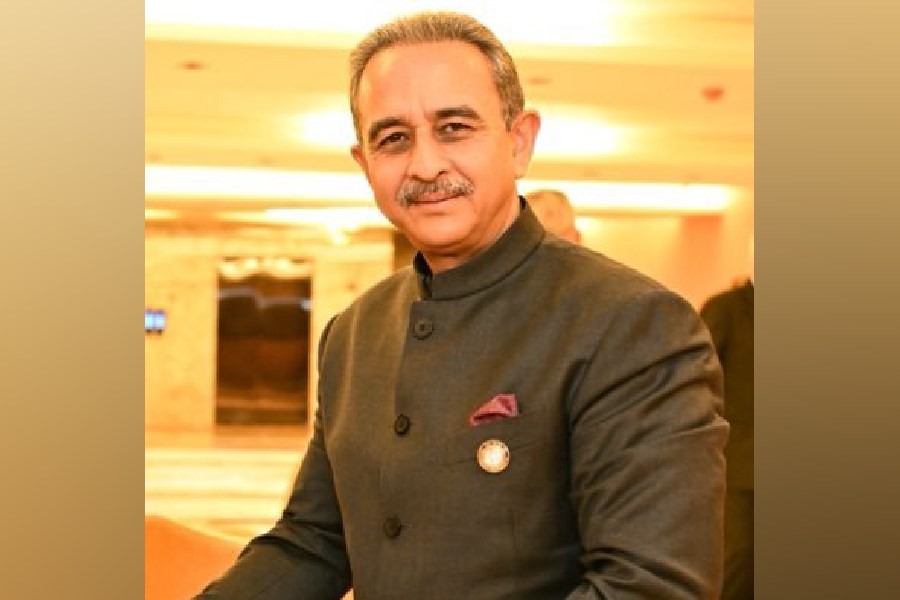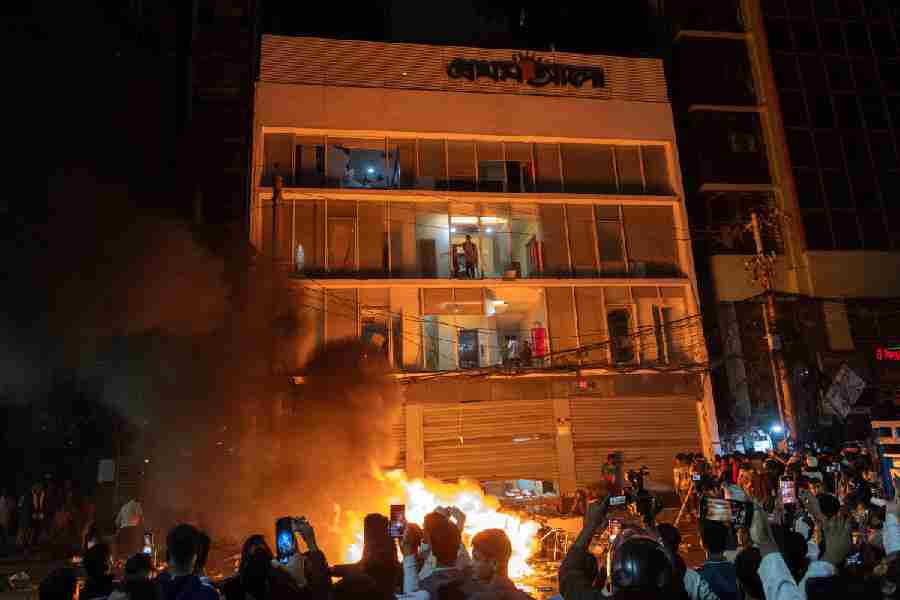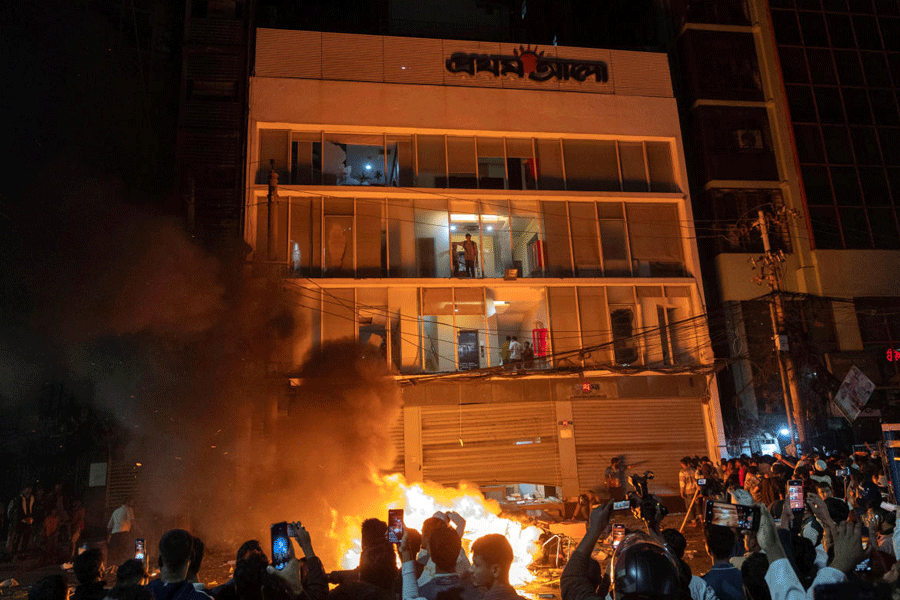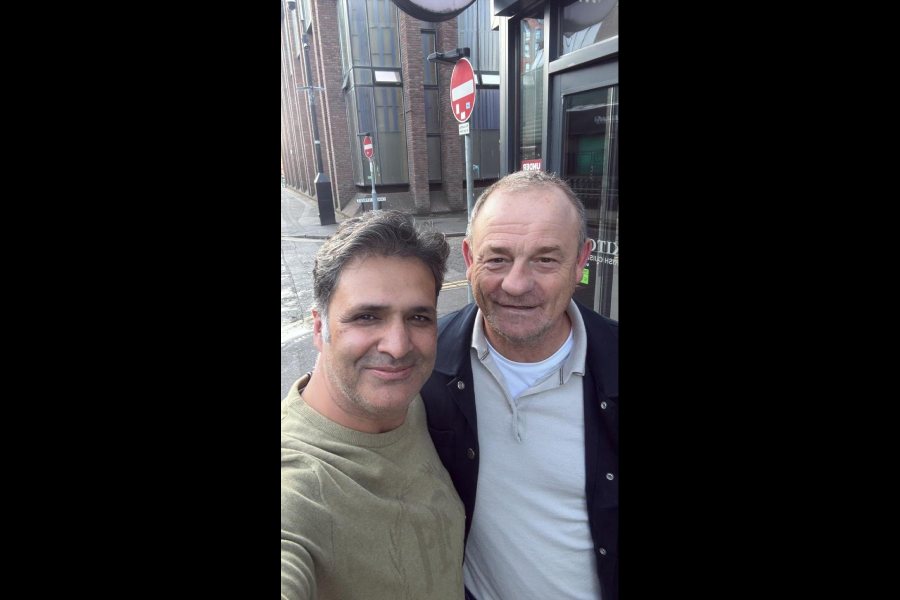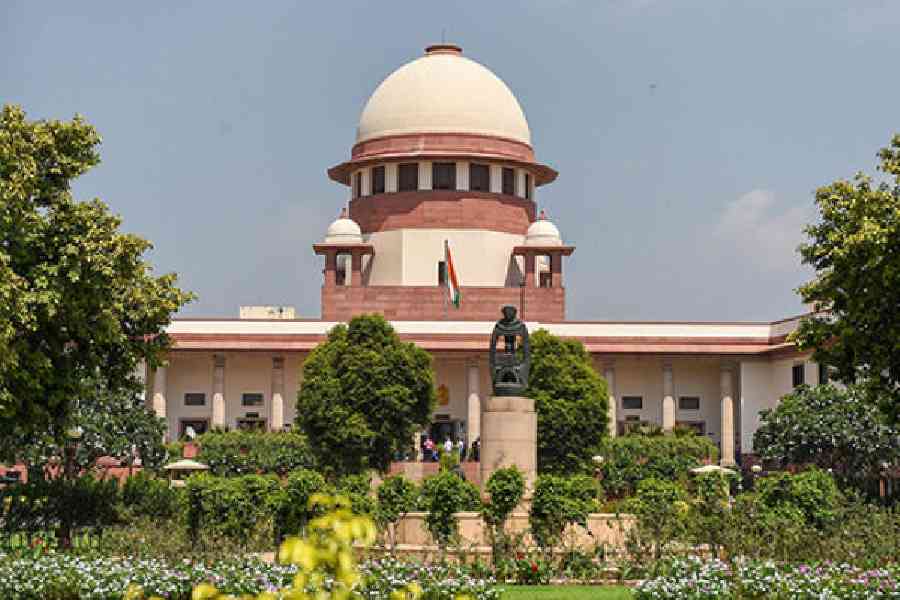.jpg) |
.jpg) |
 |
| Work in progress: With less than a month left for Rath Yatra, artisans in Puri are working overtime to create the chariots for Lord Jagannath and his siblings. Pictures by Sarat Patra |
Bhubaneswar, June 8: The transformation of massive logs into aesthetically designed rathas (chariots) for the divine siblings of the Jagannath temple is proceeding with full vigour at Rath Khala in Puri.
Around 400 artisans are busy doing what they are best known for — creating three massive chariots that would be used for Lord Jagannath’s trip to his aunt’s house on Rath Yatra.
The construction of the chariots began just over a month ago on the auspicious day of Akshay Tritiya, while the axels of the wheels of all the rathas were fitted a couple of weeks ago on the occasion of Bhaunri.
Despite the fast paced work, the craftsmen, worried about the interludes of showers, can be found working day and night to meet the deadline of Netra Utsava (the penultimate day to Rath Yatra).
“The car festival is renowned worldwide and many across the globe construct the chariot. But we carry the construction work of the three chariots for the love towards Lord Jagannath and as a part of our family tradition,” said Bijay Kumar Mohapatra, who belongs to the Biswakarma sevayat or carpenter servitors’ family.
“With auspicious days in between fixed as the deadlines for making ready different portions of the chariot, it is a challenging job and yet we are sure of meeting the target with God’s blessings,” said the carpenter of the Nandighosha (Lord Jagannath’s chariot).
Mohapatra added that all the carpenters working on the divine project were observers as youngsters when their forefathers used to be involved in the chariot construction.
“I had seen my father and grandfather making the chariots exactly the way they are built today. Even now my father leads our team and no one can determine the joy involved when we give our best for the job,” he said.
The ratha-making involves a number of divisions of labour. While maharanas and bhois construct the wheels and the main framework of the chariot, the kamars (ironsmiths) provide all the iron fittings needed for the chariot, the rupakars and chitrakars (artists) design and decorate it with paintings, the darji sebayats work on designing the cloth used for the ratha.
“The artisans involved in this process may not be engineers or hold technical degrees but they use the haatha anguli maapa (measurement with their arms and fingers) which leads to the perfect structure of the chariots,” said Ramachandra Das Mohapatra, a daitapati (one of the chief servitors) and a member of the Rath Construction Committee.
Varieties of wood are used for constructing different portions of the chariot.
The Asana and Bhaura wood is used to prepare the chassis of the rath while the Phasi wood is used to make the wheels.
These logs, more than four feet in diameter, are collected from the Nayagrah forest division while the kancha kaatha or lighter wood is obtained from the Khurda forest division.
While the wheels are already complete, the chassis of the three chariots will be set-up together on the Debasnana Purnima.
The horses, smaller deities and other adornments are attached after this auspicious day. The fabrics for the chariots, obtained from Century Mills, are tailored and decorated on the chariot before the Netra Utsav.
“We are already ahead of schedule and will make sure the divine siblings have a safe and comfortable ride to their aunt’s house on Rath Yatra,” said Bijay Kumar Mohaptra.


